Indigenous species
This is a species that is at a particular habitat or ecosystem as a result of natural forces as opposed to human effort or actions. This therefore means that plants or animals that are taken to different habitats by human beings as they move from place to place do not qualify as indigenous species regardless of the length of time. But the naturally existing organisms qualify as indigenous species.
Native species
Native species is the same as indigenous species above. The biotic and physical conditions or characteristics shape the evolution process of plants and animals in a particular habitat. When this happens without any human intervention particularly in moving these plants or animals, to the environment under consideration, these species are said to be native or indigenous (Jones & Lawton1995, pp.56-58).
Endemic species
An endemic species is one that colonizes a single habitat and no other, as opposed to the occurrence of the same species in similar habitats in different parts of the world. This simply means that the species cannot be found in two places on earth.
Invasive species
Invasive species includes both incoming species that colonize a habitat and put the other species at risk or in danger in a number of ways such as eating all their food, eating them up or scaring them away leading to domination and the uncontrolled multiplication of advantages of a native species that gives this native species huge control over the habitat.
Introduced species
Introduced species refers to species that is in a habitat in which it never evolved. This means that human beings have played a role in the movement of the species from its natural setting or habitat to its new habitat or home. The introduction can be either intentional or accidental. Introduced species can also be referred to as non-native species or non indigenous species (Jones & Lawton1995, pp.59-61)..
Non-native species
Non-native species is a species that is not in its natural habitat. Natural habitat refers to the settings or the environment that the forces of nature create for a species as opposed to the habitat that man makes for a species. When a species is non-native, it is also referred to as introduced or non-indigenous. This state of being non-native can happen either intentionally whereby man moves a certain species from one point to another or accidentally whereby there is no intention or motive for the movement of a species from one habitat to another.
Intentional introduction
Intentional introduction in ecological terms refers to the willful and purposeful transfer of a species from one habitat or environment to another. The introduction may be due to the attempt to reduce the actions of another species such as the introduction of a pest eating predator to a rice farm so as to protect the rice. It can also be done for purposes of trying to protect a species that is endangered whereby the species that is moved to a new environment is given better conditions that raise the chances of multiplication and survival. That means that former habitat posed danger either from predators of harsh climatic conditions such as droughts. A species can also be introduced to act as a source of food for another species.
Accidental introduction
This is the unwilful or unpurposeful movement of a species from one habitat to another. It is the opposite of intentional introduction. An example of accidental introduction is the shipping of luggage with Australian rats hiding in it to Africa. Note that the person shipping the luggage did not intend to take the rats with him or her but at the end of the day, the rats will end up in Africa, which then becomes their new habitat. The results of accidental introduction of species can be positive or negative for both the species and the species in the new habitat as well as man. The determining factor is the nature of the species and the nature of the new habitat.
Reasons for the Thriving of Introduced Species in their New Environment
Life in any ecosystem is determined by the nature of competition. Introduced species that thrives well in a new habitat achieves this level of success due to its ability to outcompete the other species that may be either indigenous or also introduced to the habitat. The competition may be for food or space. The rule that dictates competition is that the fittest species is the one that manages to survive while the unfit species gets outcompeted thus becoming endangered or extinct. Another factor that plays a role in the ability of a species to thrive in a new habitat is the ability of this species to adjust to the prevailing climatic conditions. For example in the case of human beings, the White Europeans who spend long periods in the African heat tend to develop a tan on their skin. This is a natural adjustment made by the body so as to survive the strong rays of the tropical sun. If the skins were to remain persistently light, it would make it easy for these people to develop skin cancer. This ability to adjust makes these people survive in these new climatic conditions. Also, brightly colored butterflies that move to an industrial zone full of predators can easily become extinct in that the predators will easily spot bright butterflies in a dark environment. But these butterflies can adjust through the change of their appearance from bright to dark so as to blend well with their new environment and thus escape the predators (Jones & Lawton1995, pp.79-83).
Reasons for the Intentional Introduction of Species
Agriculture or aquaculture
In agriculture or aquaculture, species is introduced so as to protect it from extinction or the provision of new sources of food or labor for man. Species can also be introduced as a way of getting rid of other dangerous species for example the introduction of a species that feeds on pests in a field full of crops that have been affected by pests. In this case, the drive for the introduction of the pest-eating predator is the advancement of agriculture. Note that this is closely related to biological control.
Examples of introduced species include the cane toad that was introduced in large parts of the United Kingdom from Hawaii for the purpose of eating pests that were biologically disastrous in that they were spoiling sugarcane. Another example is the introduction of the camel to Australia as a beast of burden or a source of labor for man. The camel was obtained from Asia.
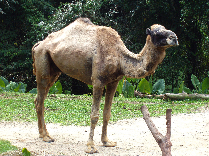
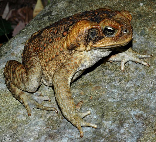
Recreation
This is the introduction of species into environments where they are kept for the purpose of being observed for leisure or fun. Most organisms introduced for recreation purposes are held in captivity, in cages; especially for the ones that can harm people if allowed to roam freely. Examples of organism that have been introduced for recreation proposes include lions and guinea fowl that are very common in zoos where people watch or observe them either for free or at a fee.
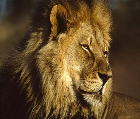
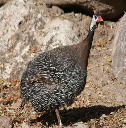
Biological control
In some instances, species can be introduced for the purpose on ensuring that another dangerous species that has colonized a particular habitat is brought under control. The reason for the control may be the degradation of the environment or the prevention of destruction of other organisms such as plants or other animal species. The introduction of the cane toad in the case of agriculture explained above is an example of biological control of the cane beetles. Other examples of biological control include the usage of ladybugs to reduce aphid and mite populations and the usage of the Pollistes wasp in the control of bollworms in cotton plantations.
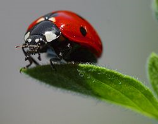
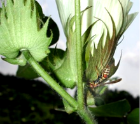
Genetic conservation
Genetic conservation on the other hand is one of the most significant reasons for introduction of species to new environments. In this particular case, a species that is nearly getting extinct is moved to an environment where it is allowed to prosper and multiply, thus eliminating the danger of losing the genes of that particular species. The danger can be due to the rise in inbreeding that raises features that make the species unfit for survival or the intrusion of other species that significantly dilute the genes of a particular species. The aggressive destruction of a species by a predator is another reason for genetic conservation that acts as a motivation for introduction of species to new habitats. It is also important to note that environmental conditions can be a hazard to a species thus threatening its extinction. This too can therefore be a reason for introduction of new species to new environments (Jones & Lawton1995, pp.121-126).
For example there are plans to move the Zimbabwean white rhino that is threatened to new habitats in such countries as Kenya where chances of survival are higher and the Bongo antelope that was introduced in Kenya from the United States for purposes of ensuring that it is able to multiply.
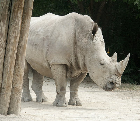
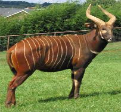
The European Starlings: Are they native to America?
The European starlings are not native to America. They are native to Eurasia; meaning that they are to be found in countries in Europe as well as parts of Asia. These birds which have a close resemblance to mockingbirds and mynas are now found in North America and other parts of the world such as Fiji. How did they end up here? They were introduced to North America as well as the other lands where they never existed before (Pyle 2001, pp.23-26). The European starlings are now among the most common birds in North America. This is because of their ability to survive in this new habitat. The unique attributes that have enabled the European starling to do well in North America include the high rates of reproduction, the ability of the bird to survive in the chaotic urban settings as opposed to other birds that can only survive in habitats that have limited human activity, and the absence of huge numbers of predators (Pyle 2001, pp.29-36).
Ballast water
Ballast water is the water that ships take in for purposes of stability as they sail on the high seas. It so happens that as they take in the water from the ports or bays of departure, numerous living organisms are also pumped into these ship compartments. These organisms are released in the new destinations as the ships have to get rid of the ballast water. Examples of organisms introduced by ballast water include the Atlantic comb jelly that was introduced into the black sea and the green crab that was introduced into the Atlantic by ballast water.
Ship stowaways
There is little different between the way ballast water introduces new species and how ship stowaways become introduced species in new habitats. The ship stowaways cling to the parts of the tanks that carry ballast water or any other comfortable position on the part of the ship that is in the water and get carried to new habitats. Examples of ship stowaways include algae and jellyfish. These species have been introduced by ships to water habitats where they never existed before.
Smallpox
This is a highly infectious disease that affects the small blood vessels as well as throat and the mouth. It leads to the appearance of numerous patches on the skin that are sore at the beginning but dry up within a few days. The disease is caused by two types of viruses known as Variola minor and Variola major. These two viruses are the same with mild differentiation. In the United States, Christopher Columbus is known to have come with the disease that went ahead to wipe out millions of Native Americans whose immune systems had not developed any strength as they were experiencing the disease attack for the first time (Fenn 2002, pp.21-22).
Chestnut blight
This is a fungal disease that affects trees. It is believed to have been introduced into the United States through imported timber or lumbar. The disease then attacked the American chestnut trees in large numbers due to its ability to spread at a fast rate.
Why Has the Norway rat And the Pigeon Done Well When Other Non-Native Species Have Not?
The Norway rat has a high reproduction rate that has enabled it to colonize its new habitat and replenish the ones that are killed either by humans or predators. It has also managed to fit well in environments where humans live without any major trouble. The pigeon is also ecologically adaptive in that it has managed to fit well into newer surroundings. It also has a high rate of reproduction which is a sure way of surviving in new habitats.
Dromedary camels in Australia
Its introduction was intentional. They were shipped to Australia from countries such as India and Iraq to aid in building the young country by the provision of transport. The native land still has camels in large numbers mainly used in desert travel. The new habitat in Australia considers camels a simple pest and there are plans to kill some of them so as to reduce their adverse effects.
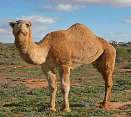
Comb jellyfish (ctenophores) in the Black Sea
Introduction was accidental. It happened as a result of ballast water. The comb jellyfish did well in the black sea due to the fitness of the sea waters and the ability of the jellyfish to multiply fast. The native environment continues to harbor high numbers of comb jellyfish. Currently, no action is being taken and their numbers are rising.
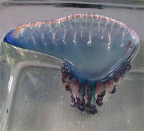
European Rabbit in Australia
Its introduction was intentional. It was done by Thomas Austin who was interested in hunting. The native land or habitat continues to have these rabbits but not in large numbers. The new habitat saw the multiplication of these rabbits to disaster levels. The farmers have attempted to control their populations by use of poison and the current statistics show that they are under control.
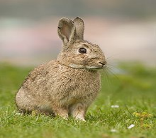
References
Fenn, E., (2002). Pox Americana: The Great Smallpox Epidemic of 1775-82, (2nd ed.), New York: Hill & Wang.
Jones, C & Lawton, L., (1995). (Eds.). Linking Species and Ecosystems. New York: Chapman and Hall.
Pyle, P., (2001). Identification Guide to North American Birds. Bolinas : Slate Creek Press.